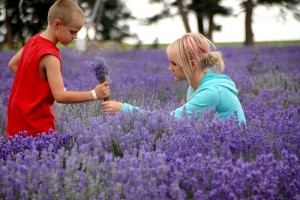Cloned Lavender
True lavender (lavande vraie) is a variety named Lavandula angustifolia, and it is all about powerful, therapeutic properties and superior fragrance. If you haven’t experienced Young Living’s Mona, Utah, lavender fields, I invite you to come in July and take a walk through the rows of vibrantly colored lavender with its enticing scent. Travelers along Interstate 15 are so stunned at the sight and the enchanting fragrance that they often pull to the side of the road to stare in wonder.
This experience of sight and scent is becoming harder and harder to find in France. The popularity of lavender in the perfume and cosmetic industries ensured that hybrids and clones would become popular. Cloned lavender yields 2-5 times more than Lavandula angustifolia. While the new varieties maximized yield, clones and hybrids also minimized the power known to true lavender.
Lavandin, a lavender hybrid, and varieties of cloned lavender like Lavandula mailette, L. grosso, L. super, and L. abrialis now fill the fields that once knew only Lavandula angustifolia.
It all began with two varieties, spike lavender (Lavandula latifolia) and true lavender, (Lavandula angustifolia). Spike lavender has flowers that are more grayish than the bluish color of Lavandula angustifolia. It has a harsher, more camphorous fragrance as well. So spike lavender was crossed with true lavender (Lavandula angustifolia) to create a hybrid called lavandin, known as Lavandula x hybrida. Some growers call it Lavandula intermedia abrialii (also Lavandula x hybrida abrialis). While lavandin is harsher than true lavender, it has stronger antiseptic properties.
In the 1970s, a lavender grower named Pierre Grosso propagated a new variety of lavandin named after him, Lavandula intermedia var. Grosso. These new lavandins were known for higher yield in mass cultivation.
Cloned lavandin is grown from cuttings rather than seed. If the scent is not as rich, the synthetic ester linalyl acetate is added to increase the “lavender” fragrance. Clones and hybrids are raised for quantity not quality. This is why it is so vital that you know your grower if lavender’s therapeutic value is important to you.



Would you like to share your thoughts?
Your email address will not be published. Required fields are marked *